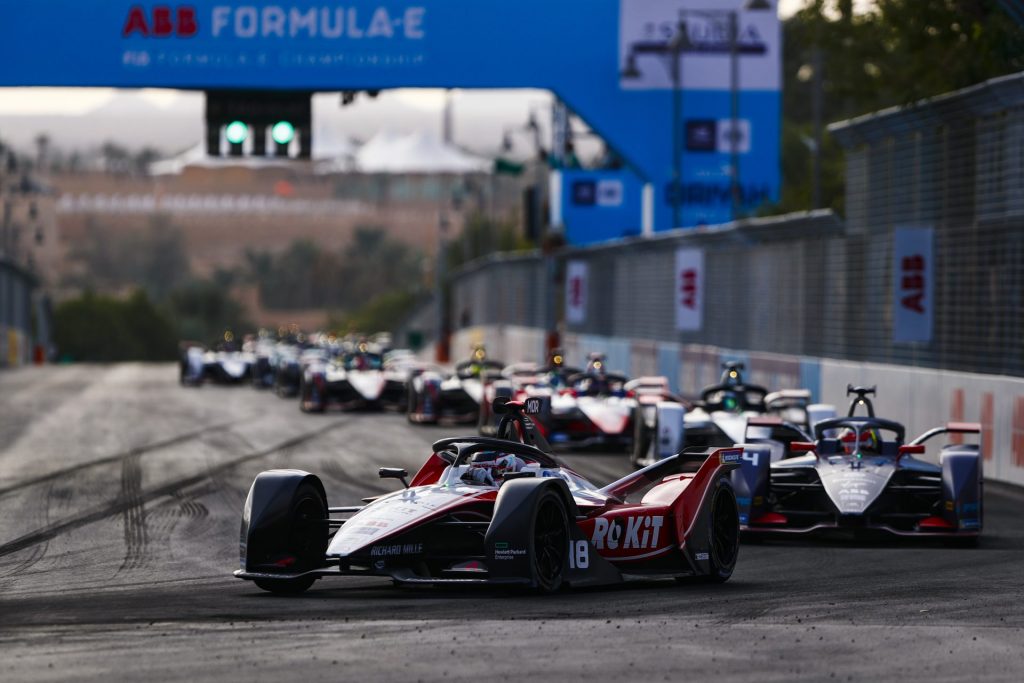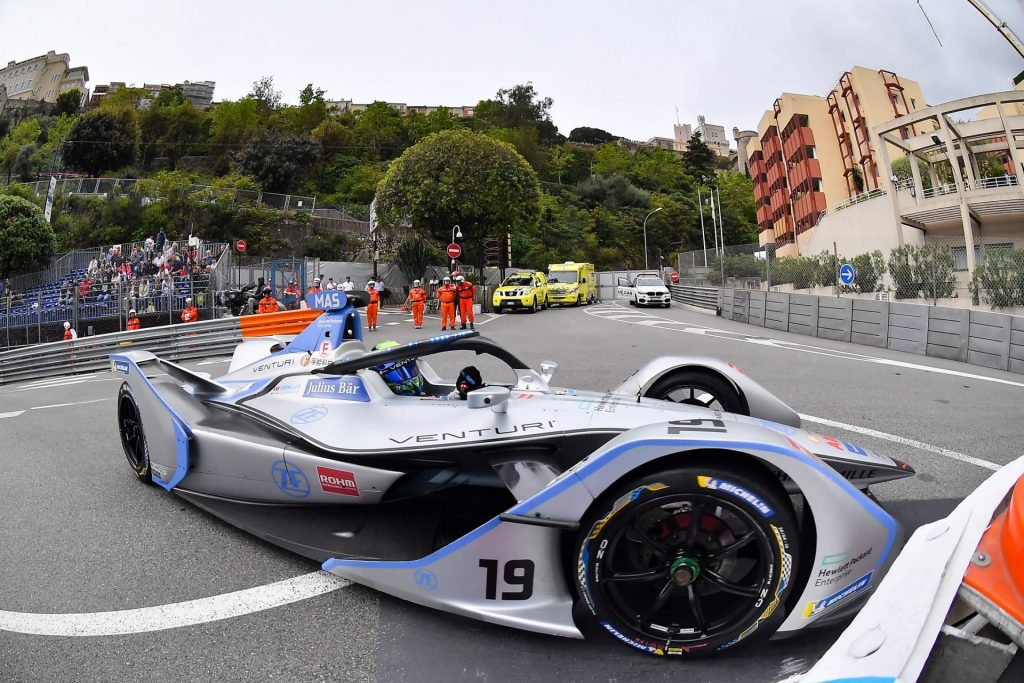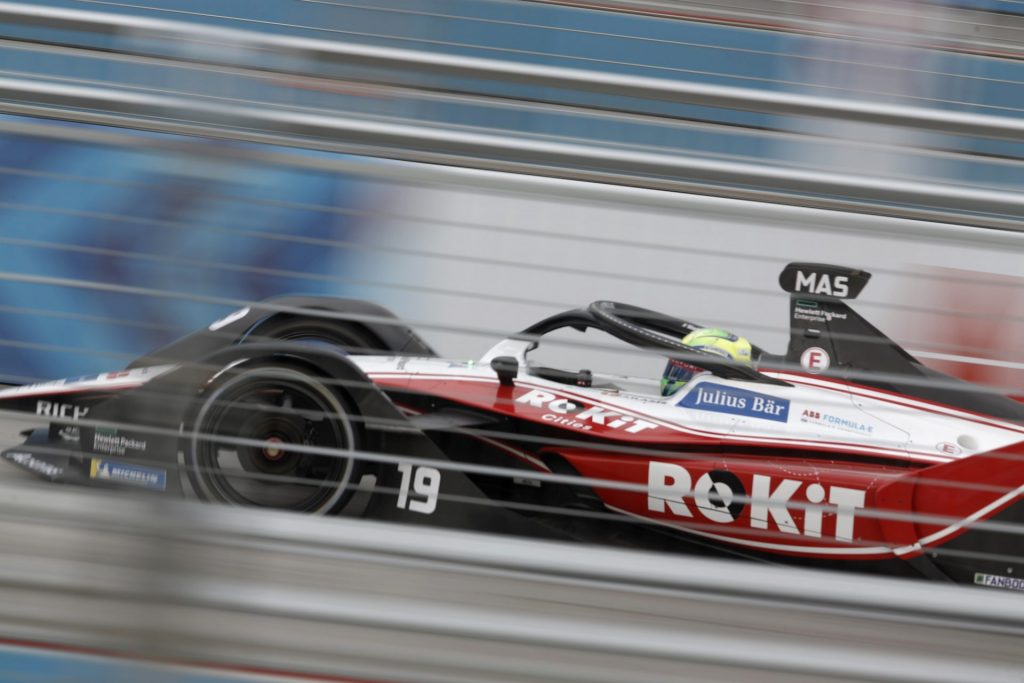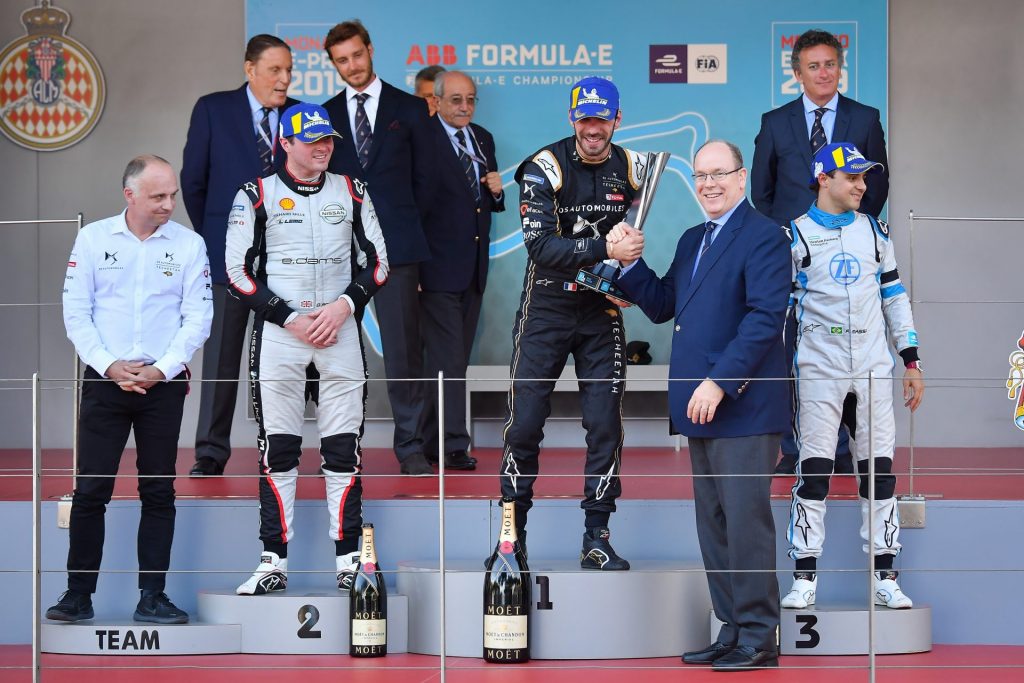It is incontrovertible that the passion for automobile sport lies in Monaco’s DNA. The Formula 1 Grand Prix, the Rallye Monte-Carlo, the Historic Grand Prix… so many mythical races and championships have been shaping the history of Monaco. The E-Prix is a great opportunity to continue this legacy as the race becomes ever more relevant, with Formula 1 announcing its ambitious sustainability plan to have a net-zero carbon footprint by 2030.
Another highlight of the event calendar in May, the Formula E-Prix is officially known as ABB FIA Formula E. It is an all-electric single-seater championship authored by FIA President Jean Todt and Spanish businessman Alejandro Agag, who developed the series as a means to demonstrate the potential of sustainable mobility, to help create a better and cleaner world. Since making its global debut in the grounds of the Olympic Park in Beijing in 2014, Formula E has won its letters of nobility and grown into a global entertainment brand, with motorsport at its heart. Nowadays, with 11 teams and 22 drivers on the grid, the Championship has become a destination for the world’s best teams and talents thanks to the participation of constructors like Mercedes, Porsche, Audi or Venturi.
Several former Formula 1 drivers have switched to electric, including Brazilian Felipe Massa who retired recently from the ROKiT-Venturi team, Monaco’s official representative at the Formula E-Prix. All in all, 12 out of the 14 races of the Championship are held in progressive cities across the five continents and all of them are street circuits, which make the races very challenging. It is one of the most stimulating and competitive line-ups in motorsport history and we spoke to Richard Micoud, Communications Director for the Automobile Club of Monaco to find out what opportunities the E-Prix brings to Monaco and the current and future challenges it faces.
The E-Prix in Monaco takes place every two years and the first race was held in 2015: Has it been as successful as you expected?
More than a revolution, it is a real innovation… even an evolution! This is totally part of the Automobile Club of Monaco’s DNA, which has always looked at the past to better write the future. Indeed, there is a real passion for this new discipline because it is ground-breaking. The public is curious about these new technologies which are popular and fashionable today.
All the races take place in innovative and progressive cities. No wonder that Monaco was chosen! In what way does the E-Prix echo Monaco’s historical inclination towards progress and technology?
The Monaco E-Prix seals the Automobile Club of Monaco’s commitment in the sectors of new energies and sustainable development, in line with the country’s outstanding commitments on that front. The ACM has imagined a very special version of the Grand Prix track for the Formula E, incorporating the start and finish line, the new curve on the right of Saint Dévote Chapel, the swimming pool zone on Port Hercules and the famous curve around the La Rascasse restaurant. Created with the aim of promoting clean mobility technologies, Formula E is the only championship in the world in which 100% electrical one-seaters compete against each other on the track. Its success has been booming since it was launched and the series offers to all motorsports fans an incredible high-quality show. It also constitutes a true research laboratory for constructors and Formula E is looking to convey the new values to the motorsport world, without actually denying its roots.
What is the impact of the E-Prix on the adoption of electric cars by the public?
Created to highlight electrical energy innovations in the motorsport field, Formula E is however a real FIA championship, for both pilots and teams. This discipline is meant for a new generation of motorsport enthusiasts. Its goal is to galvanize the electrical vehicles market and to promote its durability. Since its launch in Beijing in September 2014, to ensure optimal visibility, the championship has always been taking place at the heart of some of the most important cities of the world, in a race that goes through their most emblematic locations and iconic monuments. Thus, the race offers the glamour and the intensity which both the general public and the motorsports aficionados look for. So, yes, it is an incredible tool to advance the cause of clean mobility and to make it desirable and fashionable.
Will the E-Prix revolutionize other automobile championships towards all-electric car competitions?
Possibly, as since its debut in Beijing in 2014, the success of the E-Prix championship has been unequivocal. This is the sense of history. What’s more, this discipline allows the conjunction of both entertainment and major technical evolutions. For us in Monaco, it has been complementary to the other trials and races organized by the ACM, including the 1911-incepted Rallye Monte-Carlo (now part of the World Rally Championship), the Historic Grand Prix and of course the famous Formula 1 Grand Prix. Since 2015, the Monaco Historic Grand Prix and Monaco E-Prix are run once every two years, alternating with each other. But in 2021, we will enjoy both races on top of the F1 Grand Prix, as we had to cancel the 2020 races due to the Covid-19 crisis.
In short, the popular success of our calendar has been proving consistent because this both innovative and nostalgic, prestigious and performing, glamorous and genuine cocktail has no equivalent on the motorsport planet.
Learn more about the Formula E-Prix here.




